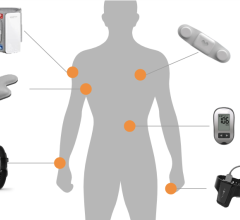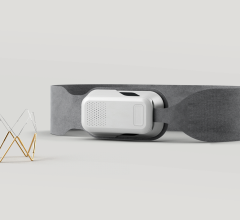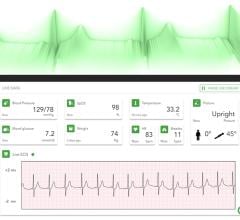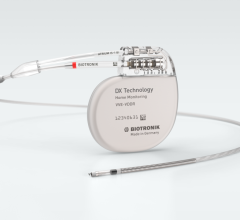
Image courtesy of St. Jude Medical
February 10, 2015 — Swedish Medical Center is the first facility in the Rocky Mountain Region to implant a new miniaturized, wireless monitoring sensor to manage heart failure (HF).
The CardioMEMS HF System is the first and only U.S. Food and Drug Administration (FDA) approved heart failure monitoring device that has been proven to significantly reduce hospital admissions when used by physicians to manage heart failure.
"This new wireless implantable sensor device is a potential game changer and a paradigm shift in the care of patients with congestive heart failure. It will allow early detection of changes in the internal fluid balance of a patient with congestive heart failure which will allow adjustments in treatment to be made before fluid retention causes trouble," explains Ira Dauber, M.D., interventional cardiologist of Swedish Medical Center.
The CardioMEMS HF System features a sensor that is implanted in the pulmonary artery (PA) during a non-surgical procedure to directly measure PA pressure. Increased PA pressures appear before weight and blood pressure changes, which are often used as indirect measures of worsening heart failure. The new system allows patients to transmit daily sensor readings from their homes to their health care providers allowing for personalized and proactive management to reduce the likelihood of hospitalization.
Heart failure occurs when the heart is unable to pump enough blood to meet the body's demands. According to the Centers for Disease Control and Prevention, more than 5.1 million Americans have heart failure, with 670,000 new cases diagnosed each year. Patients with heart failure are frequently hospitalized, have a reduced quality of life and face a higher risk of death.
The CardioMEMS sensor is designed to last the lifetime of the patient and doesn't require batteries. Once implanted, the wireless sensor sends pressure readings to an external patient electronic system. There is no pain or sensation for the patient during the readings. The CardioMEMS HF System allows the patients to transmit critical information about their heart failure status to a clinician on a regular basis, without the need for additional clinic or hospital visits. This provides clinicians with the ability to detect worsening heart failure sooner and adjust treatment to reduce the likelihood that the patient will need to be hospitalized.
Data from a clinical trial showed that the CardioMEMS technology reduces heart failure hospital admissions by up to 37 percent. The CHAMPION trial studied the effectiveness of the CardioMEMS HF System in New York Heart Association (NYHA) Functional Classification System class III heart failure patients who had been hospitalized for heart failure in the previous 12 months. Results of the trial demonstrated a statistically significant 28 percent reduction in the rate of heart failure hospitalizations at six months, and 37 percent reduction in heart failure hospitalizations during an average follow-up duration of 15 months.
Roughly 1.4 million patients in the U.S. have NYHA Class III heart failure, and historically these patients account for nearly half of all heart failure hospitalizations. According to the American Heart Association, the estimated direct and indirect cost of heart failure in the U.S. for 2012 was $31 billion and that number is expected to more than double by 2030.
The CardioMEMS HF System, from global medical device manufacturer St. Jude Medical, is approved by the U.S. Food and Drug Administration (FDA) for commercial use in the United States.
For more information: www.heartfailureanswers.com, www.swedishhospital.com/conditions-we-treat/heart-care/cardiomems.htm


 July 10, 2024
July 10, 2024 








